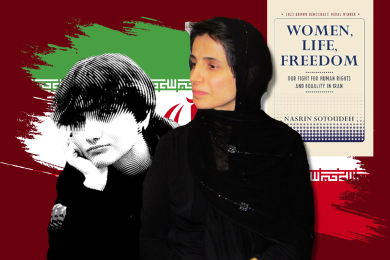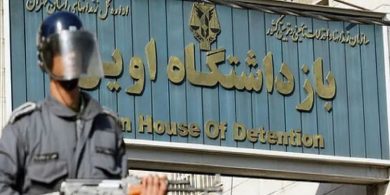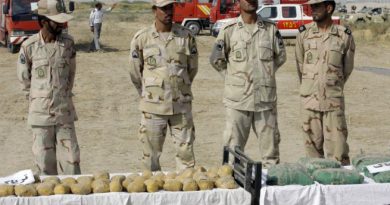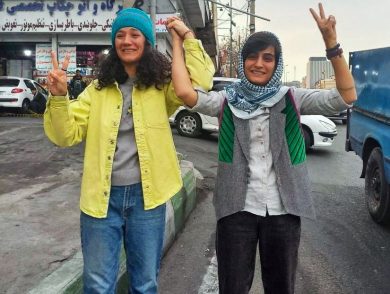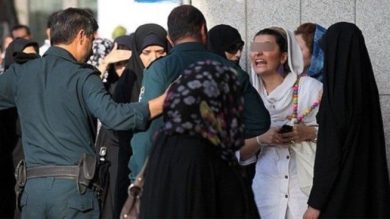Sanctions are among the most effective tools available to governments and international bodies for countering malign actors such as the Islamic Revolutionary Guard Corps (IRGC). As the military and economic powerhouse of Iran’s regime, the IRGC wields significant influence domestically and internationally, engaging in activities that include suppressing dissent, sponsoring terrorism, and destabilizing the Middle East. By targeting the IRGC with sanctions, policymakers aim to weaken its financial networks, limit its operational capabilities, and disrupt its global influence.
This article examines case studies where sanctions have successfully disrupted the IRGC’s operations, explores their broader impact, and highlights the challenges of enforcing these measures.
Understanding Sanctions and Their Role
Sanctions are punitive economic or political measures designed to influence the behavior of a specific entity or government. In the case of the IRGC, sanctions typically target individuals, businesses, and financial networks associated with the organization. These measures aim to:
• Freeze assets and block access to international banking systems.
• Restrict the ability to fund proxy groups and illicit activities.
• Deter foreign governments and companies from engaging with the IRGC.
• Expose the IRGC’s economic networks and weaken its domestic influence.
Case Study 1: U.S. Sanctions Under the Countering America’s Adversaries Through Sanctions Act (CAATSA)
In 2017, the United States passed the Countering America’s Adversaries Through Sanctions Act (CAATSA), imposing broad sanctions on the IRGC and its affiliates. These measures designated the IRGC as a Specially Designated Global Terrorist (SDGT) and targeted its financial and economic networks.
Impact
1. Disruption of Financial Networks:
CAATSA sanctions blocked IRGC-affiliated entities from accessing the U.S. financial system and made it illegal for foreign banks to process transactions involving IRGC-linked organizations. This significantly curtailed the IRGC’s ability to move money internationally.
2. Diminished Foreign Investment:
Fear of secondary sanctions discouraged foreign companies from investing in sectors controlled by the IRGC, such as construction and energy. For instance, several European firms withdrew from Iranian infrastructure projects after CAATSA’s implementation.
3. Proxy Funding Impact:
The sanctions made it harder for the IRGC to finance proxy groups like Hezbollah and the Houthis. These groups reported funding shortages, reducing their ability to sustain prolonged conflicts.
Case Study 2: European Union (EU) Sanctions on IRGC-Linked Individuals
The European Union has imposed its own set of sanctions targeting IRGC leaders and entities involved in human rights abuses and terrorism. For example, in 2021, the EU sanctioned several IRGC commanders linked to crackdowns on protests and regional destabilization.
Impact
1. Isolation of Key Figures:
By freezing assets and imposing travel bans on IRGC commanders, the EU limited their ability to operate internationally, signaling strong disapproval of their actions.
2. Strengthened International Unity:
The EU sanctions complemented U.S. measures, creating a unified front that increased pressure on the IRGC. This coordination sent a clear message that IRGC activities would not be tolerated.
Case Study 3: Sanctions on IRGC’s Economic Empire
The IRGC controls a significant portion of Iran’s economy, particularly in the construction, telecommunications, and energy sectors. In response, targeted sanctions have been levied against IRGC-affiliated companies, such as Khatam al-Anbiya, the IRGC’s engineering and construction arm.
Impact
1. Economic Isolation:
Sanctions on Khatam al-Anbiya restricted its ability to participate in international projects, cutting off revenue streams that were used to fund IRGC operations.
2. Increased Costs for the Regime:
With fewer international partners, the Iranian regime had to rely on domestic resources for large-scale projects, increasing financial strain.
3. Transparency of Economic Networks:
Sanctions exposed the extent of the IRGC’s economic control, raising awareness among international companies and discouraging future partnerships.
Challenges of Sanctions
While sanctions have proven effective in disrupting the IRGC’s operations, they are not without challenges:
1. Sanctions Evasion Tactics:
The IRGC employs sophisticated methods to bypass sanctions, including using front companies, illicit trade routes, and cryptocurrency.
2. Lack of Global Consensus:
Not all countries enforce sanctions against the IRGC, creating gaps that the organization exploits. For example, some nations continue to engage with IRGC-controlled entities due to economic or political considerations.
3. Humanitarian Concerns:
Broad sanctions on Iran’s economy can inadvertently harm ordinary citizens, potentially fueling anti-Western sentiment and bolstering the IRGC’s domestic narrative.
Lessons Learned
The case studies above highlight key lessons for effectively leveraging sanctions against the IRGC:
1. Targeted Measures Are Key:
Sanctions should focus on specific IRGC-linked individuals and entities to minimize collateral damage on ordinary Iranians.
2. International Cooperation Is Crucial:
Unified sanctions by multiple countries amplify their impact and close loopholes that the IRGC could exploit.
3. Vigilant Enforcement Is Necessary:
Governments must invest in monitoring and enforcement to ensure sanctions are not bypassed through evasion tactics.
The Road Ahead
As the IRGC continues its
destabilizing activities and human rights abuses, sanctions remain a critical tool for limiting its power. To maximize their effectiveness, future efforts must focus on enhanced international coordination, targeting the IRGC’s evolving financial networks, and addressing its growing use of cryptocurrencies and other illicit mechanisms.
Governments and organizations must also maintain pressure through consistent enforcement and regular updates to sanctions lists, ensuring that the IRGC’s activities are continually disrupted. Furthermore, advocacy efforts should prioritize distinguishing between measures targeting the IRGC and the Iranian population, reinforcing the message that sanctions aim to weaken a repressive institution rather than harm ordinary citizens.
Conclusion
Sanctions have proven effective in disrupting the IRGC’s operations, as demonstrated by the U.S. CAATSA sanctions, EU measures against IRGC leaders, and targeted restrictions on its economic empire. While challenges remain, such as evasion tactics and uneven enforcement, these measures have significantly weakened the IRGC’s ability to fund terrorism, sustain proxy wars, and suppress dissent.
To further dismantle the IRGC’s power, the international community must continue to collaborate, refine its strategies, and adapt to new threats. By doing so, sanctions can remain a vital tool in the fight against one of the most dangerous forces threatening regional and global security.
Join Our Newsletter!
Stay informed with the latest updates, news, and ways to take action in the fight for justice and global security. Sign up now to get updates delivered straight to your inbox!

